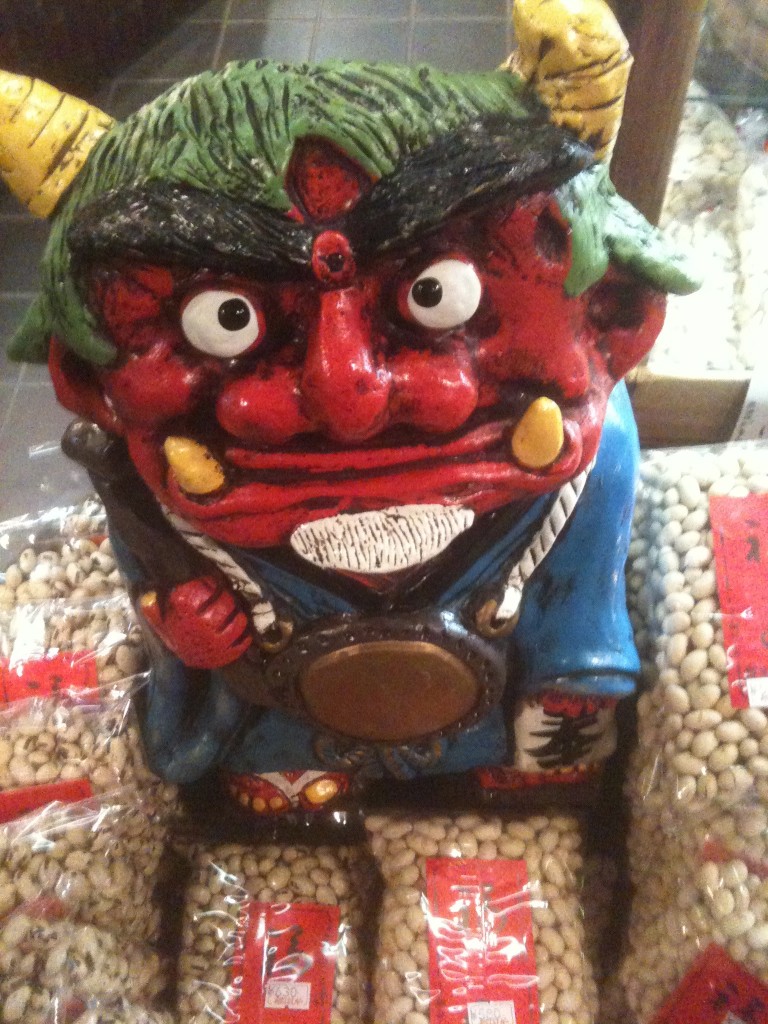
Demons and beans are what Setsubun is all about - but why?
February 3 is Setsubun when Japanese mark the seasonal break and look forward to the coming of spring. In Japan’s old lunar calendar, taken from the Chinese, it used to be associated with the New Year which took place around this time. It’s deeply syncretic, celebrated at both temples and shrines alike.
The main activity at Setsubun is bean-throwing, the idea being that you throw beans at wicked demons to banish them for the coming year. ’Oni wa soto, fuku wa uchi,’ (Out with the demons, in with happiness) is the accompanying cry. But why beans? What on earth do beans have to do with demon disposal?
An article in the Japan Times had a full page spread all about Setsubun and the food connection. History, types, recipes – it was a true feast of Setsubun fare. The extract below is taken from it, and the full article by Makiko Itoh can be read here.
**************************************************************************************
On Setsubun, each household loads up asakemasu, the wooden box in which sake is sometimes served, with roasted daizu, or soybeans. Then the head of the household (or a male in the household whose Chinese zodiac animal matches that particular year) throws handfuls of beans outside of the front entrance while chanting, “Oni wa soto, fuku wa uchi” (“Demons outside, good luck inside”).
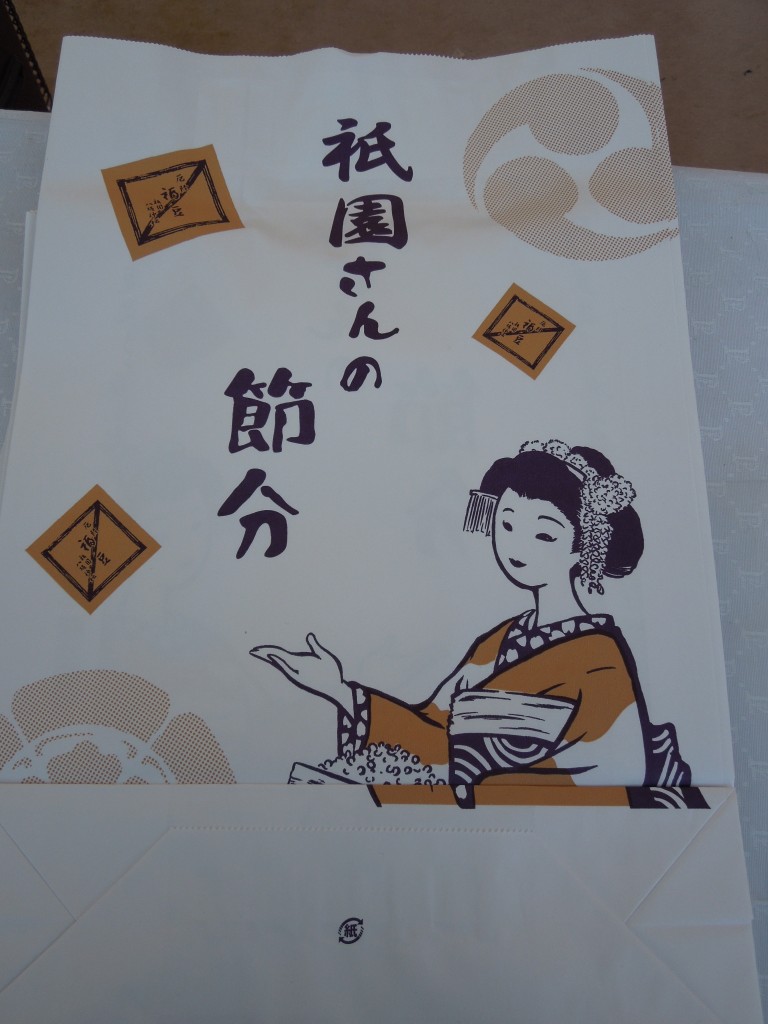
Packet of lucky beans for throwing at home from Yasaka Jinja in the geisha district of Gion
Sometimes the rest of the household chants along, “Gomottomo, gomottomo” (“That’s right, that’s right”) as he performs this task; some, especially the kids, play the part of oni by donning paper masks and running from the bean-thrower. This ritual is called mamemaki, or the scattering of beans. Afterward, everyone eats the same number of roasted beans as their age for luck.
(In the north and some parts of the south, peanuts are used instead, probably because they are cheaper and more convenient.)
These days, local temples and their priests perform mamemaki, especially in densely populated urban areas. Perhaps this is for practical reasons: A whole apartment block of people throwing soybeans might be a bit messy. The more likely reason is that the father of any given family is too busy working to be scattering beans, since Setsubun is not an official public holiday.
But why throw roasted soybeans? In Japanese folklore, beans of all types are considered to be symbols of good luck. Stewed kuromame (black beans) are served as part of the New Year’s osechi feast as a symbol of fertility, and osekihan (short-grain mochi rice with adzuki beans that is a bright reddish purple) is a festive dish at many events throughout the year.
But the use of roasted soybeans for mamemaki is a bit more complicated. Raw soybeans are hard and long-lasting and impossible to eat, just as an oni (demon) or evil is hard to get rid of. But by roasting the beans with fire, they are conquered and become edible — and imbued with special powers. So the throwing of the beans symbolizes the throwing out of evil spirits, and eating them means the person has conquered and digested those demons. It’s a bit complicated, but I’m sure it made a lot of sense to the people of old.
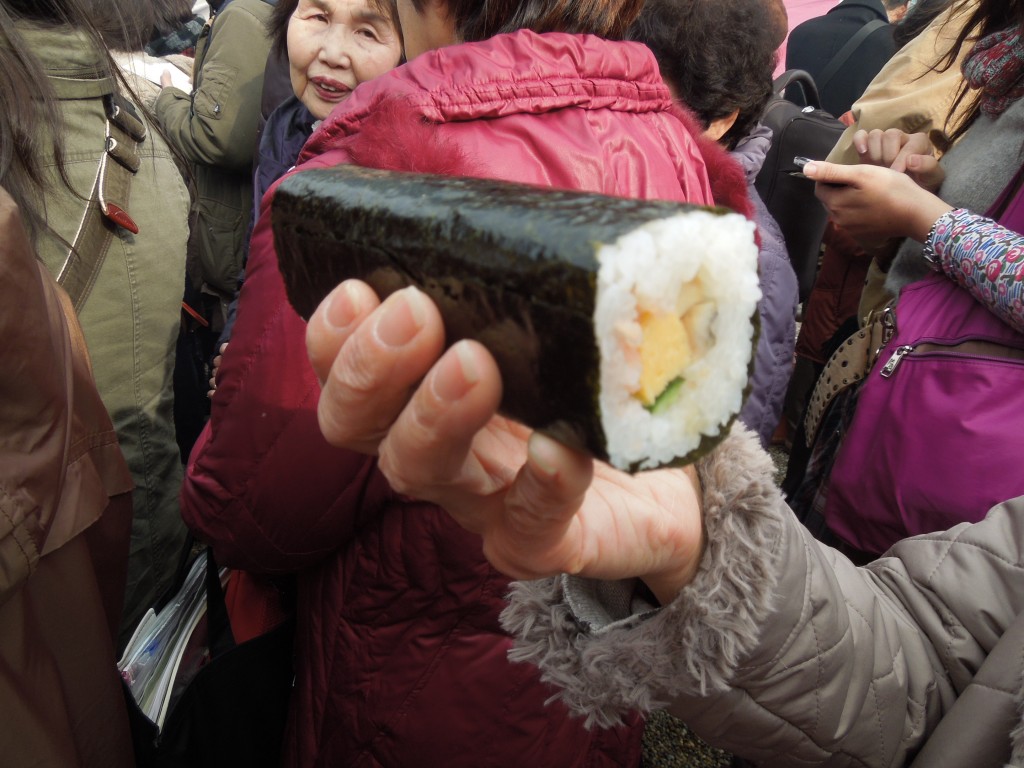
One enormous ehomaki about to be devoured - but in which direction is the key question.
Mamemaki and soybeans are not the only lucky food associated with Setsubun. One that has become very popular in the last decade is the ehōmaki. Each person takes an uncut fat sushi roll, faces the ehō or lucky direction (this changes annually; this year it’s east-northeast), and eats the whole roll in silence. This is supposed to bring good luck to that person for the rest of the year.
The ehōmaki tradition originated in the Osaka area but has spread around the country, mainly due to some convenience store chains heavily promoting the sushi rolls, filling the marketing lull before the big chocolate rush of Valentine’s Day.
Yet another food associated with setsubun is iwashi (sardines). In some regions of Japan, a whole sardine is skewered through the eyeballs on a holly branch, then grilled and displayed outside the house. Sardines are used because they are “blue” fish containing lots of oil, which when grilled emits smoke — believed to ward off evil. Piercing the eyes with the holly, which is considered a sacred plant, symbolizes the piercing of an oni‘s eyes, incapacitating it and making it unable to enter the house.
Occasionally the fish and holly branch are stuck into a knotted rope displayed outside the main entrance. Dried soybean pods are hung with the fish too in some regions. But in some households the bulk of the fish is eaten as part of a Setsubun meal and only the pierced head is hung outside. When my mother was growing up, she and her brothers and sisters would hang the fish heads under the outside porch, since the open underside of their traditional Japanese house was believed to be particularly vulnerable to attacks by evil spirits. Invariably the neighborhood cats would come to make a feast of the fish heads, so they were usually gone by the next day.
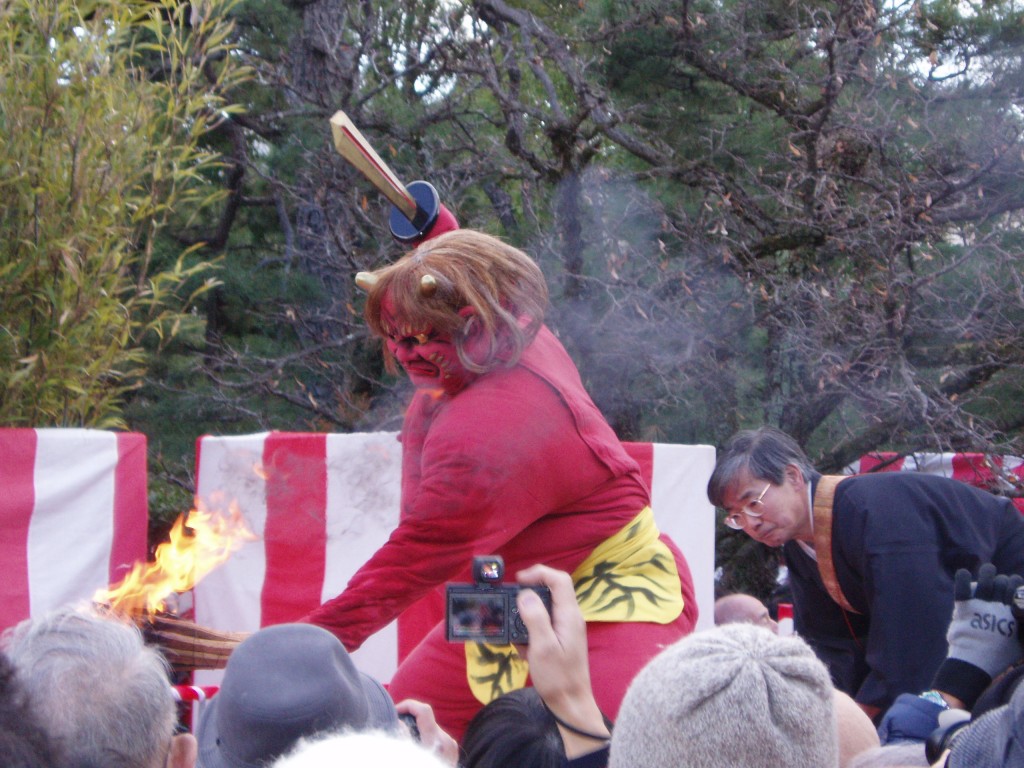
A red devil terrorises the locals at Rozanji Temple in Kyoto
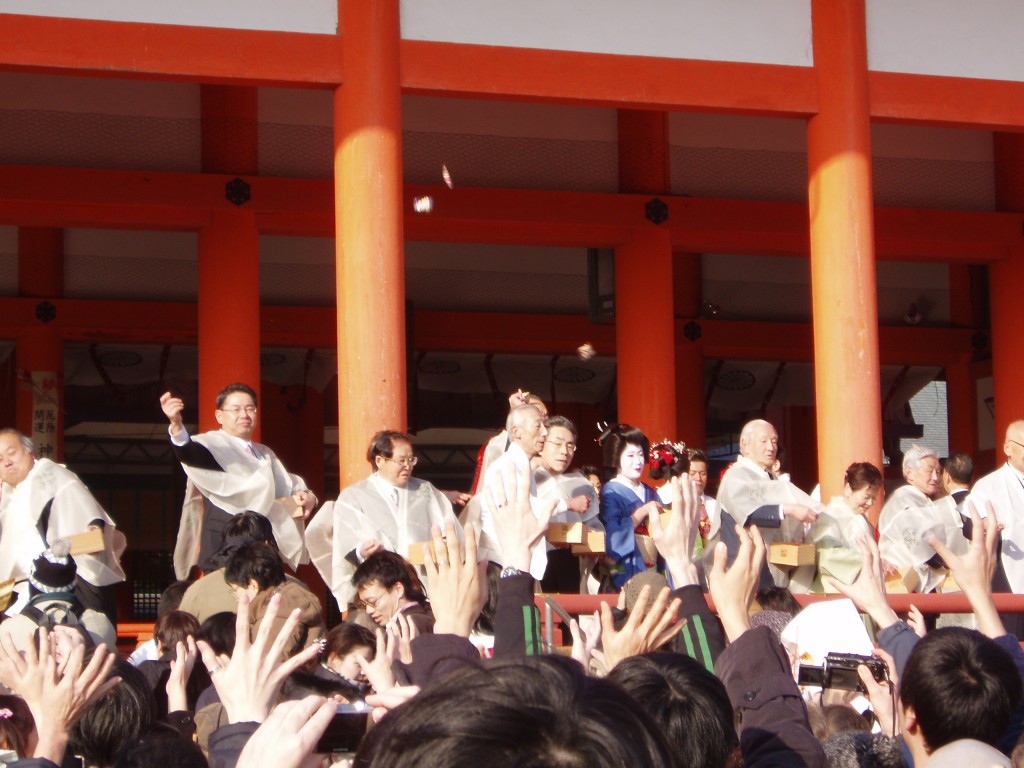
Bean throwing at Heian Jingu, when geisha too get in on the act
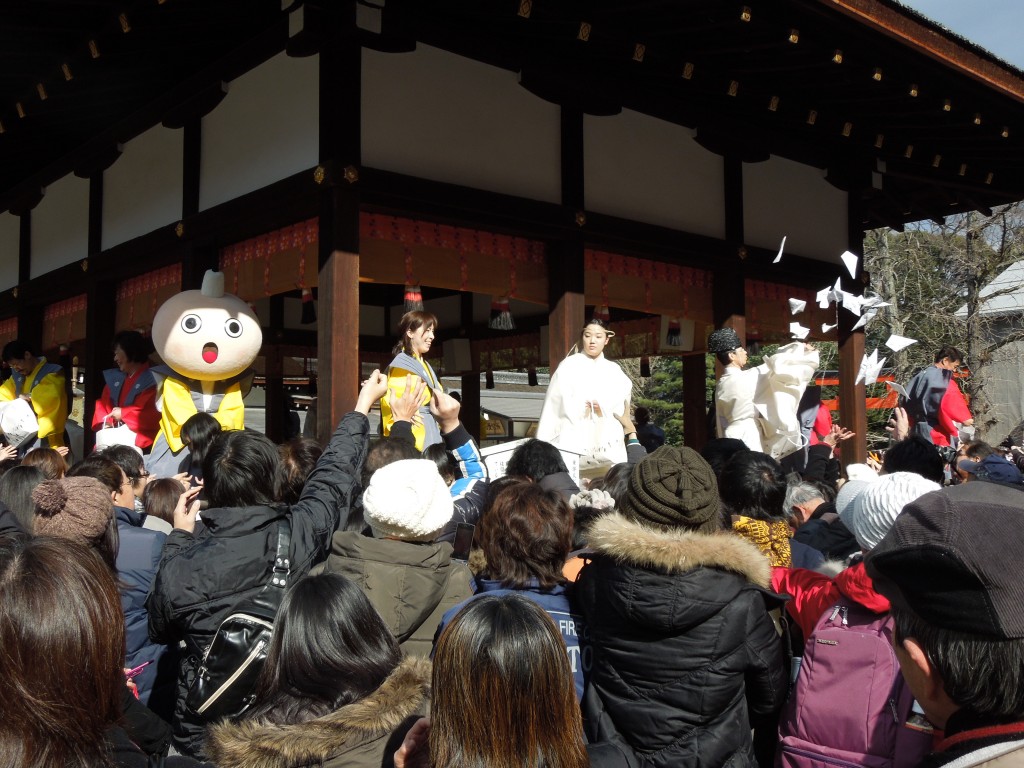
Bean throwing at Shimogamo Jinja, complete with Kyoto Tower mascot
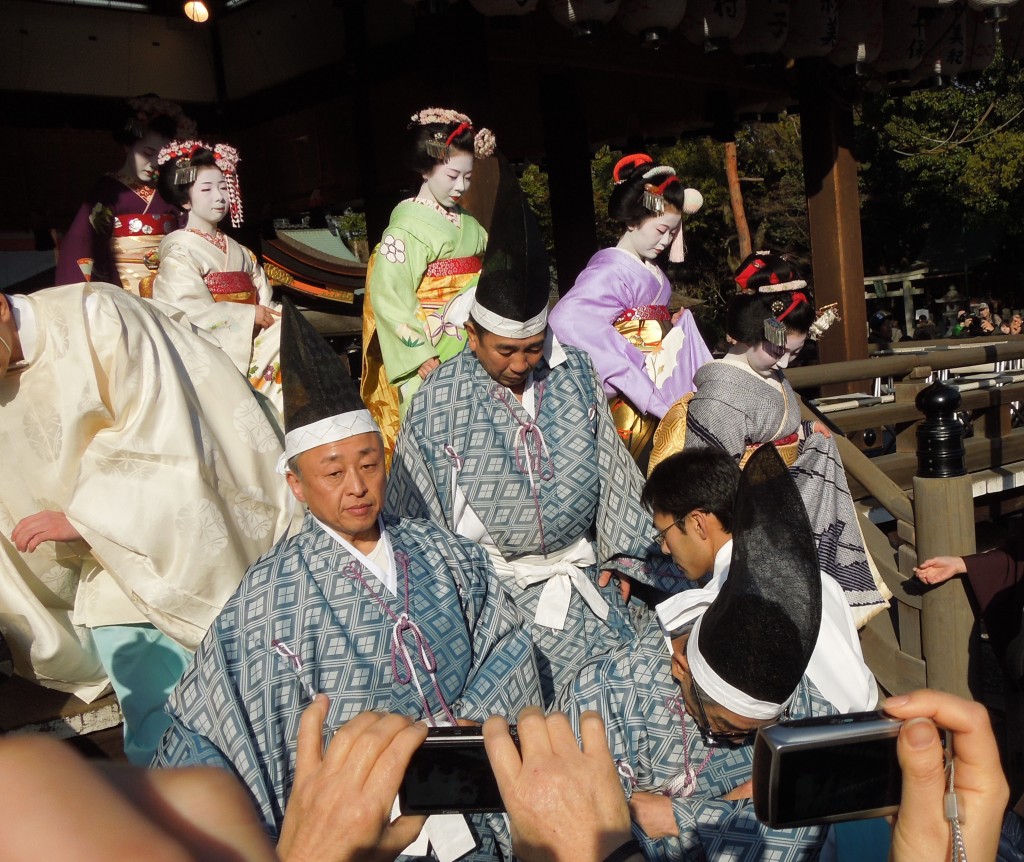
Maiko from nearby Gion leave the stage after participating in the bean-throwing at Yasaka Jinja in Kyoto
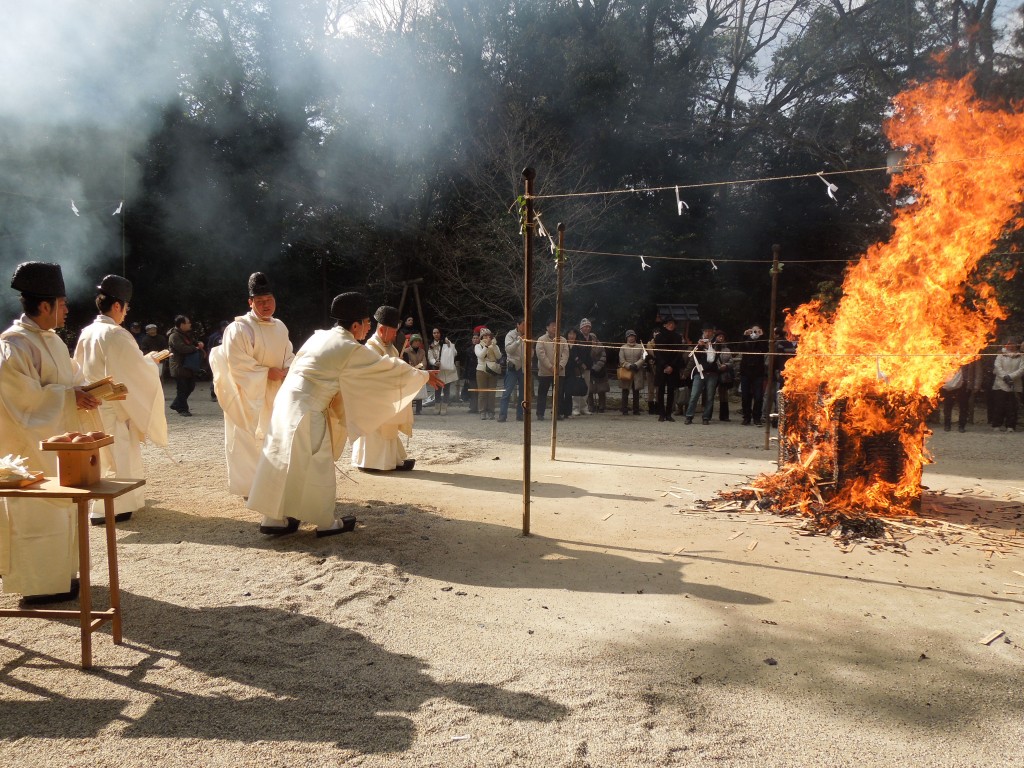
Setsubun yamabushi-style with a gomaki fire rite at Kyoto's Shogo-in

Or it could just be that beans are just naturally good evil repellants. See for instance the lucky korean bean dish Patjuk [ http://en.wikipedia.org/wiki/Red_bean_soup#Korea ] or the ancient Roman festival Lemuria, which included a dried bean throwing ritual remarkably similar to Setsubun [ http://en.wikipedia.org/wiki/Lemuria_(festival) ].
Hi Quin, that’s fascinating, especially the ancient Roman festival. Very similar to Setsubun, as you say, and surely too much of a coincidence to be pure chance. There must be something in beans that appealed to
ancient sorcerers as an antidote to evil, and I would imagine it’s the green sprouts and life-asserting properties…
Perhaps so! Certainly, if you’ve ever tried germinating a bean using only a bit of water and a touch of sunlight, it’s amazing the power those little things hold in them. Life asserting itself indeed, it certainly is a form of good magic.